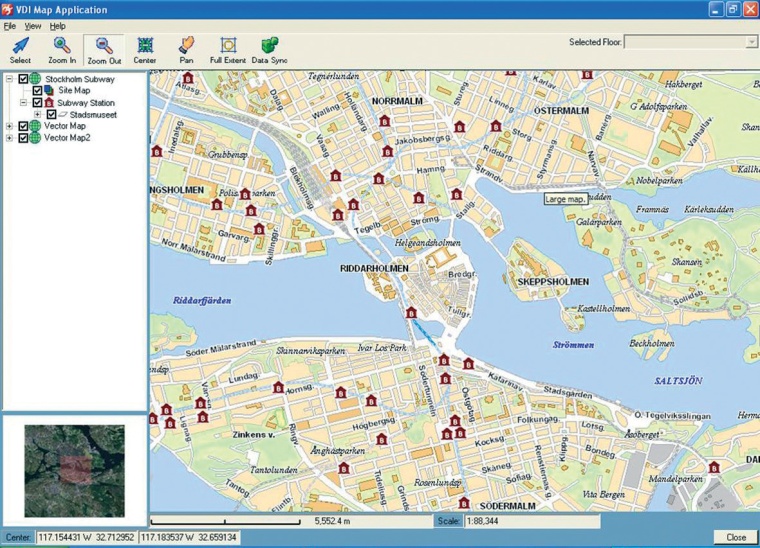Visual Defence: increases security for Stockholm LokalTrafik
Visual Defence: increases security for Stockholm LokalTrafik. Stockholm LokalTrafik (SL) is responsible for operating the metro, buses, commuter and local trains. With a vision for...

Visual Defence: increases security for Stockholm LokalTrafik. Stockholm LokalTrafik (SL) is responsible for operating the metro, buses, commuter and local trains. With a vision for the people of Stockholm to choose public transit over cars, it is the mission of SL to develop and find new solutions for the public transportation system that meets passenger needs for a simple, reliable, cost-effective safe and secure journey. SL has a comprehensive public transit system with approximately 100 train stations and more than 2,100 buses. “We need to provide our passengers a journey where they know that violence is detected”, stated Lennart Jangälv, CEO of Stockholm LokalTrafik.
The Issues
Vandalism on buses and in train stations as well as robberies of transit drivers was causing passenger safety concerns. As a result, ridership was not meeting targets. SL was looking for a solution that would deter these types of activities, provide police with evidence of crimes and convince the people of Stockholm that public transit is a convenient and safe alternative to driving.
“We are talking about day-to-day violence, the robbery of drivers, fist-fights. We need to record those events to provide the police with the possibility of identifying the person who is violating the law,” says Lennart Jangälv. The goals of the new system are to minimise the number of robberies and attacks, provide police with evidence of crimes, reduce the cost of vandalism, reduce the number of injuries and deaths, shorten response times to alarms, minimise false alarms and minimise public transit disruption.
The Security Concept – One Common System
The vision of SL was to have one common system for all video and safety alarms. Visual Defence provided SL with its Command and Control Center (3C), Video and Event Manager, software platform as the system core. The system needed to be able to integrate with existing cameras and security subsystems as well as provide the flexibility and scalability to handle future requirements.
In the train stations, video surveillance is done by both analogue and digital cameras from a number of different suppliers. Each of the more than 2,500 station cameras are transmitted over an IP network to the 3C server system. As an open architecture platform, the 3C also provides SL with a single point of management for all subsystems and edge devices including: Video Analytics, Fire Alarm, Intrusion Detection Access Control, IP Intercom Help Phone, Driver Alarms, Scheduling (Pub- Trans), Trouble Ticketing (HIT) and mobile digital video storage for approximately 10,000 cameras on 2,100 buses.
“The 3C software handles the complex environment of the camera system. It is integrated with safety alarms so that when an alarm occurs, we can connect the right camera to the alarm,” said Henrik Virro, Project Manager at Stockholm LokalTrafik.
System Convergence, Alarms and Operator Workflows
3C converges the SL systems with varying levels of integration depending on requirements. The video analytics system, designed to help reduce vandalism on the tracks, is partially integrated to allow the 3C to receive alarms. When the video analytics system detects someone on the tracks, an alarm is generated and displayed on the 3C.
The HIT system is integrated bi-directionally while the fire alarm system will be a full OPC integration, allowing 3C to receive events from the fire alarm system. When an SL operator acknowledges an event generated in 3C, they are presented with step-by-step instructions for responding.
The operator instructions are the output of 3C’s unique workflow tool. The workflow tool allows SL to easily define the specific “rules” that their security operations personnel must follow using flowcharts. Rules can include both automatic and manual activities.
For example, the system can be configured to automatically start recording if a certain event occurs, but can also include a manual response from the operator to verify the status of the event.
2,100 Buses
The solution for the buses incorporates more than 10,000 cameras. Each bus will install five IP cameras and one Visual Defence Mobile Digital Video Storage System (DVSSm). The DVSSm acts as a mobile video recorder and streamer, working in conjunction with the network cameras to provide high image quality and Power over Ethernet (PoE), resulting in cost efficient installations.
In the case of an event on the bus, the video is tagged by the central monitoring station and downloaded into the 3C system through a WiFi connection when the bus enters a depot.
Return on Investment
According to Jangälv, the reasons for investing in these technologies are clear. “We believe that this solution will help with cash flow. If people are scared to come to SL buses and trains because of violence, we lose passengers and ticket revenue. We need to provide our passengers a journey where they know that violence is detected.”
Contact:
Bethany Moir
Visual Defence,
Richmond Hill, Canada
Tel.: +1 905 7311 254
Fax: +1 905 7318 748
bethany.moir@visualdefence.com
www.visualdefence.com












